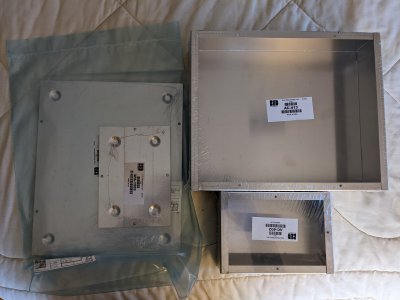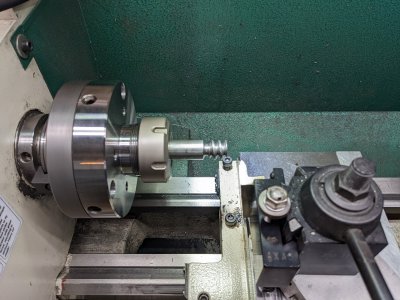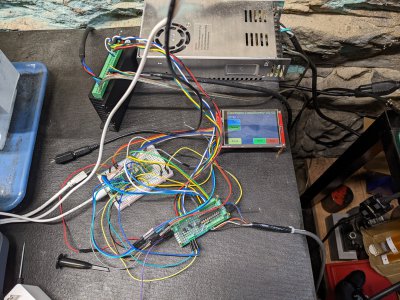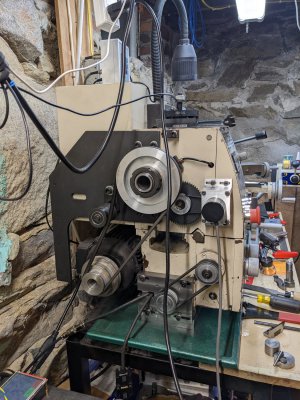So, since you are building pretty much the same thing I was planning on building, would you possibly be interested in some form of collaboration? My day job is circuit design, and circuit board layout. I do switching power, RF, analog, digital design for harsh environments. Everything from small SMT board with 0402 components, to big stuff with bolt terminals. PM me if interested.
As for noise, planning on upgrading this lathe to a VFD. So yeah, that's a concern. Just yesterday ordered some encoders with RS422 (differential) outputs. I've got a few RS422 to logic output IC's picked out...
Dan
Possibly to very interested.
Stubborn guy that I am, will at least wait for my PCB to arrive! My PCB has ground and power planes, so it ought to help. Local and bulk decoupling. Not using a crappy wall wart of any kind ought to help as well. I can cobble in a linear regulator as a test if need by. My PCBs are due to arrive in early October, via the "slow boat", aka the cheapest and slowest shipping I could get from China. A set of boards made it to the airport, so it shouldn't be too, too long.
My background is (was) automotive radar. So millimeter wave RF, SMT, 0201 components, extreme tolerances and dense packaging were normal and required. Also did some EM modeling of those systems. Assisted in whole car level EM simulations for a while. As an aside, that was a sheer exercise in high performance computing with massively parallel GPU's solving EM equations.
My G0752Z lathe is powered by a VFD from the factory. From my simple experiments, it appears that the VFD is not the culprit. The problem exists without the VFD on. The problem does not get worse if the VFD is active. The issue's more likely grounding and power supply noises. The extent of the problem follows where the power cords are plugged in. The motor power supply line is way longer than required, I am sure it is radiating and conducting junk everywhere. There is no cable shielding at the moment. Haha, nearly everything is wrong, but it still works as an ELS - as long as I don't connect the scope probe to ground. Today I received some Bud Boxes, but I still need for my connectors to arrive from - yes, China. Only one's that I could find at a palatable price. I have no access to nice Amphenol Mil-spec connectors.

Differential lines are great, so is optical coupling. The interface to my stepper driver is opto coupled. I'm positive my design could be a lot better. My PCB was designed as a prototype, just to get an idea of what to expect. At V0.1, if it is reasonably functional, and a little less noisy, I'd consider it a successful run. Already have some ideas for improvements, most of which I should have put in the first time, but I was getting too impatient.
The second spin ought to be a whole lot easier, since I won't have to learn the tools from scratch. Last time I personally designed PCB's was the last millennia, the 1980's to be exact. So I had a lot of catch up to go through for this board! Was a big change for me to go from Unix workstations, auto-routers, and Parts Departments (groups of people dedicated to making footprints and symbols), an procurement, to a PC with open source SW, rolling my own parts & footprints, and ordering stuff on my own. Wasn't hard, but it sure was a lot to learn and do in a week and a half.
Don't have a day job anymore. Was downsized a while back, and decided working and playing for myself was more interesting. The only deadlines I have are the ones I make for myself. So I get to apply myself to pursue these daydreams.

My day job kept me so busy I had little time for fun.





